National Parks in Hawaii
How Many National Parks Does Hawaii Have?
With all the natural splendor in Hawaii it may be shocking to learn that the Hawaiian islands only have two National Parks.
One on the Island of Maui and the other on the Big Island of Hawaii. There are also 3 national Historic parks.
Top 5 National Parks to Visit in Hawaii
Haleakala National Park
Kula, Maui, HI
Haleakala National Park on Maui is home to the massive Haleakala Volcano which has been dormant since the 1700’s. Haleakala is the third largest volcano in Hawaii, with its mass making up approximately three quarters of the island of Maui! This park, which was founded in 1961, boasts volcanic terrain, subtropical rainforests and stunning views. The drive to the crater is an easy one as Haleakala Highway is a completely paved, 10 mile highway that winds it way from the main gate to the summit at 10,023 feet. Take your time on this drive, every curve of the road offers excellent photo opportunities and breathtaking scenery. Be sure to drive cautiously as you may come across an endangered Nene Goose, rogue cows or cyclists on the road. Experienced cyclists will find Haleakala a thrilling challenge. There is no bike path though and with the high altitude, unpredictable weather and intense elevation gains, cycling this park is not for the faint of heart.
Haleakala translates to “House of the Sun” and legend has it that the demigod Maui lassoed the sun from the volcano’s summit in an attempt to slow it down and make the days longer. The sunrise from the summit is spectacular, a magical experience you will not soon forget. The Summit is a sacred location for native Hawaiians, so it is expected that visitors be respectful of the land and others. You will need to make a reservation for sunrise viewing as this is a popular activity for locals and tourists alike. If you are lucky to book your viewing on a clear morning you will be able to see both the Big Island and Molokai from up there. Keep in mind that the weather in Haleakala park is different from the rest of Maui. Dress warmly, in layers, with a sweater, warm hat, gloves, even long johns! Temperatures can reach freezing especially with the high winds.
Haleakala National Park is open 24 hours a day so you can decide to tour the park when it’s most convenient for you. If getting up at 3am, driving to the park and waiting in the freezing cold for a sunrise isn’t your thing then go in the afternoon or for the sunset at the end of the day. There are options for overnight stays in the park as well, multiple camping sites and cabins are available to rent.
Hikers will find many excellent trails in Haleakala National Park. From short, simple walks to all day hikes and strenuous trails at high elevations. There is no food, drinks or fuel service in the park, make sure you bring plenty of water, a full tank and stomach.
All visitors must purchase a pass, they are non transferable and valid for 3 days including the date of purchase. Park passes can be purchased at the automated self pay machine at the entrance gates.
Hawaii Tri park annual pass $55.00
Hawaii Volcano National Park
Hilo, HI Big Island
Come see the sheer power of nature at Hawaii Volcano National Park. Some of the most distinctive, geological and treasured landscapes on earth can be found here as you explore this area of the Big Island. Rising from sea level to 13,681 feet, the park includes the summits of two active volcanoes – Kilauea and Mauna Loa. Kilauea is Hawaii’s youngest volcano and is one of the most active volcanoes on earth. Mauna Loa is a whopping 19,999 cubic miles making it the largest active volcano on earth! Because of these incredible natural wonders, Volcano National Park is the most visited park in Hawaii and is designated as an International Biosphere Reserve and UNESCO World Heritage site. The summit of Kilauea volcano is a sacred landscape with deep connections to the native Hawaiian culture. The Halemaumau crater, which is at the summit of Kilauea is the home of the sacred goddess Pele.
If you are lucky enough to be at the park when lava is flowing you will get a sense of the pure sacred force of Pele. Depending on where the eruption is located, viewing the lava flow is usually pretty easy. Crater Rim drive has several viewpoints of the Kilauea crater along with views of steam vents. Chain of craters road is close to 19 miles long offering a scenic drive through rainforest, craters, lava fields and stunning coastline views. Along this drive you can also stop at the Pu’uloa Petroglyphs and the Holei sea Arch. Depending on the current conditions, you may be able to hike out to the lava flow from an access point at the end of Chain of Craters Road as well.
It’s not all about lava and eruptions at the park. More than half of the park is designated wilderness, providing unique hiking and camping adventures. There are two campgrounds and 150 miles of hiking trails ranging from short to expansive, through rainforest, desert, volcanic craters, lakes and lava tubes.
First stop in the park should be the Kilauea visitor center for up to date information on eruptions, air quality, events, hikes and current out of bound areas. The landscape changes frequently at Volcanoes National park, it’s always a good idea to be up to date on the latest weather and closures. Open daily from 9-5.
Passes for Volcanoes National Park can be purchased at the park entrance, online or by using the WIFI at the visitors center.
Kalaupapa National Historical Park
HI Molokai
Kalaupapa National Historical Park is located on the north shore of Molokai. Kalaupapa translates to “flat leaf” This beautiful and remote peninsula was once home to Hawaii’s leper colony. During King Kamehameha V reign in the 1800’s all afflicted people were quarantined to this isolated location. The peninsula is surrounded on three sides by churning ocean and the cliffs behind provide a barrier, restricting the colony from the rest of Molokai. This Historic Park now offers educational guided tours by mule or bus. Airplane charters are another popular way to view this beautiful two mile wide peninsula.
Kaloko-Honokohau National Historical Park
Kailua-Kona, HI Big Island
Just 2 miles south of KOA airport, on the ocean side of Hwy 19, you will find Kalako Honokohau National Historical Park. This quiet gem of a park was established in 1978 to preserve ancient Hawaiian culture. This is a fantastic place to get immersed in and learn about traditional Hawaiian life. Here you will find fishponds, a canoe hale, fish traps, lava planters, temple and home ruins, as well as amazing petroglyphs and the sacred Queens Bath golden pond. Plus the ahupua’a (land division) between Kaloko and Honokohau that gives the park its name. This sacred place is also home to a healthy population of Hono (green sea turtles), they can usually be found at the beach in the water or lounging on the loads of lava rock left behind from the eruption of Haualalai in the 1800’s.
There are many walking and hiking trails throughout the park but camping is not permitted. A small but informative visitors center is located in the park, along with a few restrooms. Entrance to Kaloko Honokohau is free.
Pu’u uhonoua o Honaunau National Historical Park
Honaunau, HI
On the beautiful south coast of Kona is the Pu’uhonua “city of refuge”, a special place with peaceful Mana (energy). This park was a safe haven for those that broke the Kapu laws, which in old Hawaii were punishable by death. Many say they can feel forgiveness and peace flow through these grounds that were used for centuries by the Hawaiians. This spiritual sanctuary includes the Royal grounds and the Hale o Keawe Temple.
There is a .5 mile trail that offers a self guided tour, be sure to check in at the visitors center to pick up a map for the tour. Park Ranger talks are available daily, educating on the history of these sacred lands.
Are Hawaii National Parks Free?
Some of the parks have free entrance, and others charge a fee.
Entrance to Kaloko Honokohau is free.
- Passes for Volcanoes National Park can be purchased at the park entrance, online or by using the WIFI at the visitors center.
- Hawaii Tri park annual pass $55.00. The annual pass is valid for entrance fees for pass holders and occupants of a single, private, non-commercial vehicle at
- Hawai’i Volcanoes National Park, Haleakala National Park and Pu’uhonua o Honaunau National Historical Park. The park is not responsible for misplaced, lost, or stolen cards. This pass does not cover camping fees and is non-transferable and non-refundable.
- The National Park Service does not charge any entrance fees for admission to Kalaupapa National Historical Park. However, Kekaula Tours and Saint Damien & Marianne Cope Molokai Tours do charge fees for their services.
What is the Best Time of Year to Visit Hawaii National Parks?
Most people would agree that April through June and September through November are usually the best times to visit the Big Island, when the prices are a little lower and the crowds are less as well, and the weather is at its best. The off season, which is usually Mid-April to early June and fall, September to mid-December, will have the best rates on all of the islands, and they will also be less crowded. Though, if you are traveling during peak times, and want to check out the parks, other than Haleakala, early morning would be the best option for crowds.



